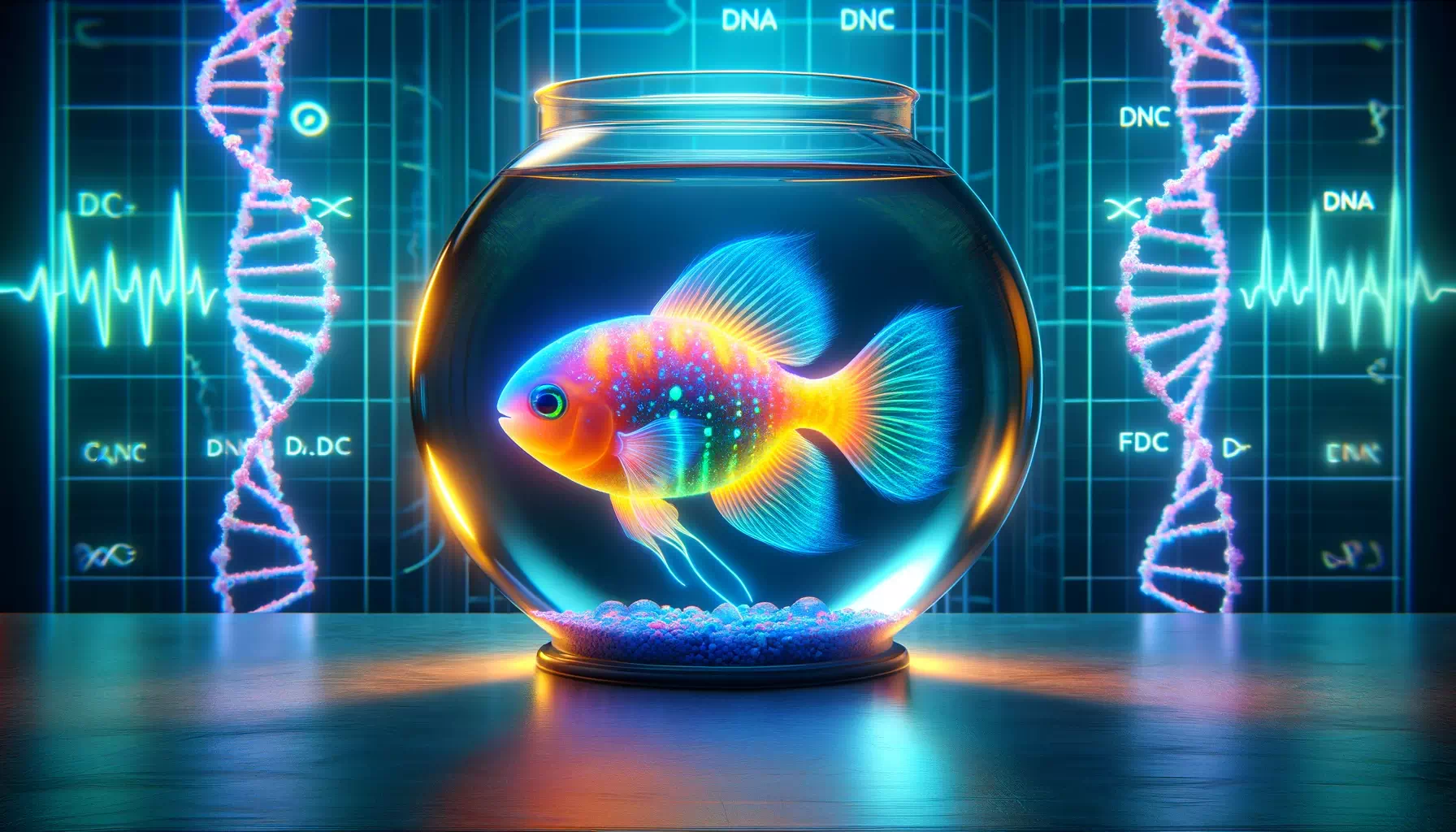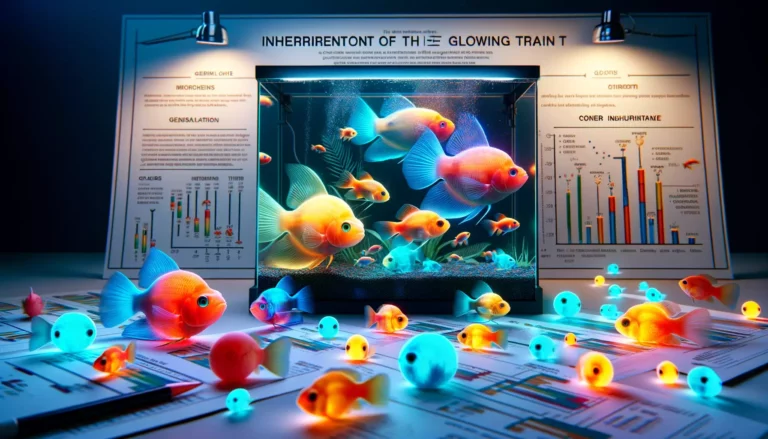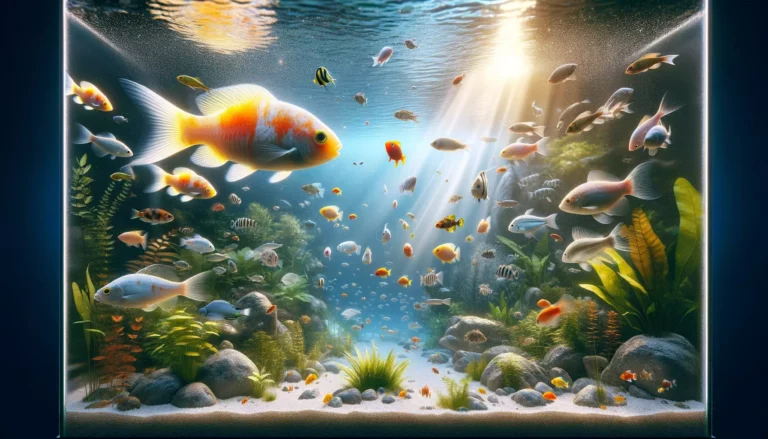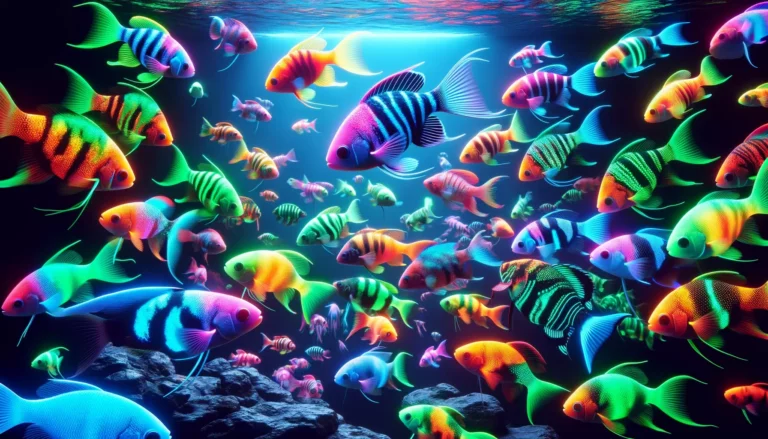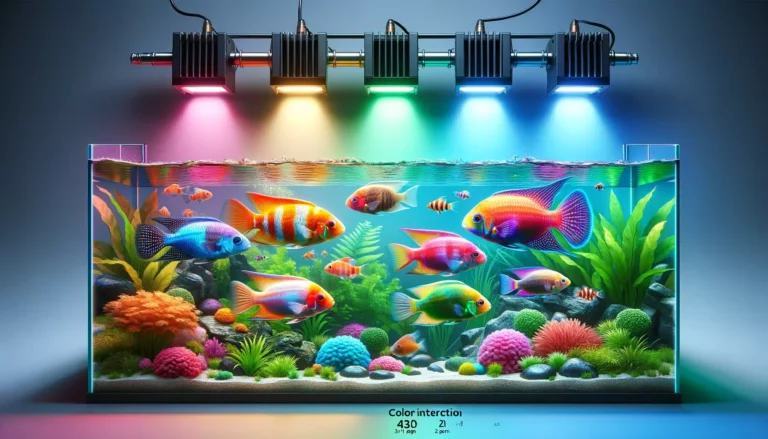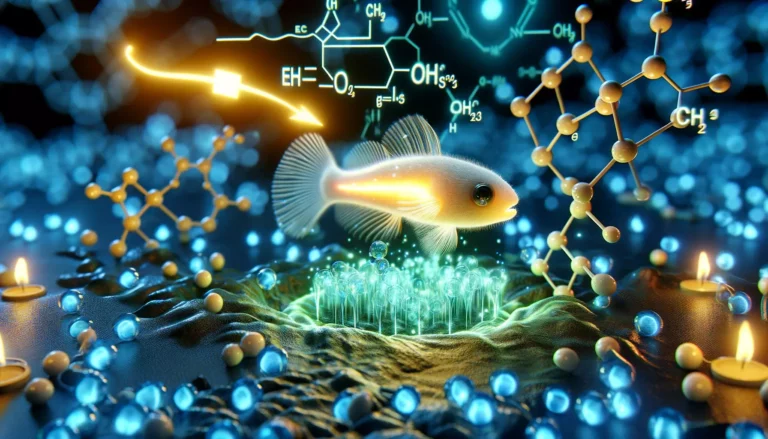Genes that make GloFish fish glow
GloFish are genetically modified fish known for their unique ability to glow in vibrant colors, making them a popular choice among aquarium enthusiasts. This remarkable feature is achieved through the insertion of specific genes that encode for fluorescent proteins into their DNA. These genes are derived from other bioluminescent organisms, such as jellyfish and coral.
The mechanism behind their glow involves the production of these fluorescent proteins within specialized cells called chromatophores. These proteins absorb ultraviolet light and then emit it as visible light, giving the GloFish their striking appearance. It’s important to note that this fluorescence is not harmful to the fish and is simply a byproduct of their genetic modification.
The Science Behind Their Glow

The key genes responsible for the glow in GloFish include the green fluorescent protein (GFP) gene, which produces a green glow, and the red fluorescent protein (RFP) gene, responsible for the red glow. The specific combination of these genes and their regulatory elements determines the fish’s coloration. For example, a combination of both GFP and RFP genes can result in a vibrant orange color.
Genetic modifications in GloFish are carried out through a process known as transgenesis, where the desired genes are introduced into the fish’s genome. Ethical and environmental concerns regarding genetically modified organisms (GMOs) have led to strict regulations in many countries, which aim to ensure the well-being of the fish and prevent their release into the wild.
In conclusion, the captivating glow of GloFish is made possible by the insertion of genes encoding fluorescent proteins into their DNA, which are derived from bioluminescent creatures like jellyfish. These genes, such as GFP and RFP, produce the vibrant colors seen in GloFish. It’s essential to remember that these fish are genetically modified, and ethical considerations play a significant role in their breeding and sale.
Understanding the Key Genes in GloFish

The history of GloFish is a fascinating journey that began in the early 2000s. These unique genetically modified fish were not originally intended for the aquarium trade but rather for scientific research. The first GloFish were developed by scientists in Singapore and the United States, with the aim of creating a tool for environmental monitoring.
The breakthrough moment occurred when Dr. Zhiyuan Gong and his team at the National University of Singapore successfully inserted a green fluorescent protein (GFP) gene from a jellyfish into zebrafish embryos. The purpose was to create fish that would glow in the presence of environmental toxins, serving as living sensors for water pollution. This project was instrumental in demonstrating the potential applications of genetic engineering.
The first GloFish were introduced to the market in 2003, primarily in the United States. They were initially sold as novelty pets, and their vibrant colors, including Electric Green and Starfire Red, captured the imagination of aquarium enthusiasts. The response from the public was overwhelmingly positive, leading to the widespread availability of GloFish in pet stores.
Balancing Innovation with Ethics
GloFish quickly gained popularity, and additional colors, such as Sunburst Orange and Cosmic Blue, were developed through further genetic modifications. These fish not only became a hit among hobbyists but also sparked debates about the ethics and safety of genetically modified organisms. As a result, regulatory measures were put in place to ensure responsible ownership and prevent the release of GloFish into the wild.
A Journey from Science to Pet Industry
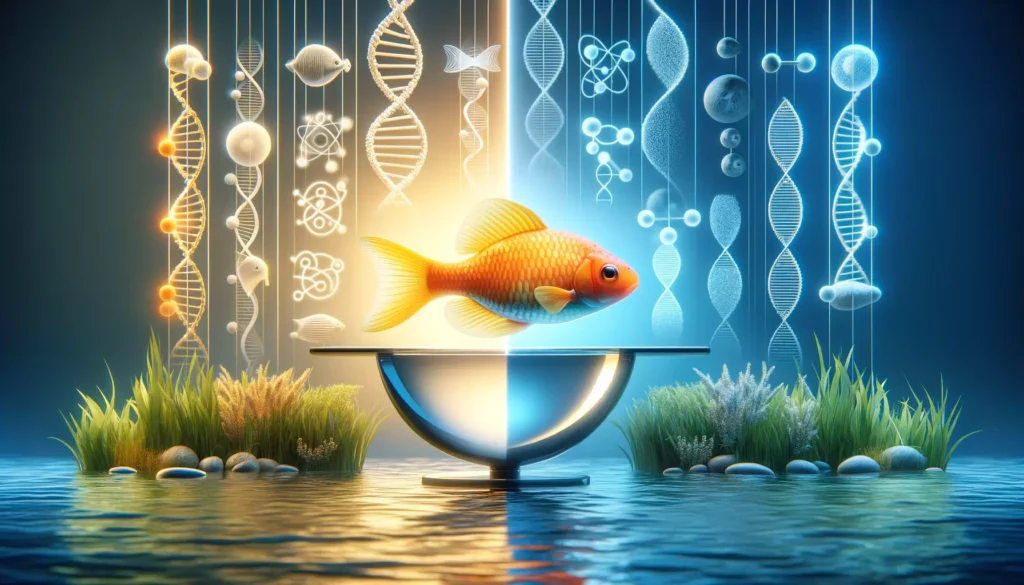
The glow of GloFish is a captivating phenomenon rooted in the intricate workings of bioluminescence. To understand how these fish emit their radiant colors, it’s essential to delve into the underlying biological processes.
Bioluminescence, the ability of living organisms to produce light, is at the core of GloFish’s glow. In their case, this light is not self-generated but is a result of the expression of specific genes encoding for fluorescent proteins. These genes are derived from naturally luminescent organisms, such as jellyfish and coral.
The primary genetic players responsible for the glow in GloFish include the green fluorescent protein (GFP) gene and the red fluorescent protein (RFP) gene. These genes are introduced into the fish’s DNA through genetic modification. Once integrated into the fish’s genome, these genes are expressed within specialized cells called chromatophores.
The Popularity Surge of GloFish
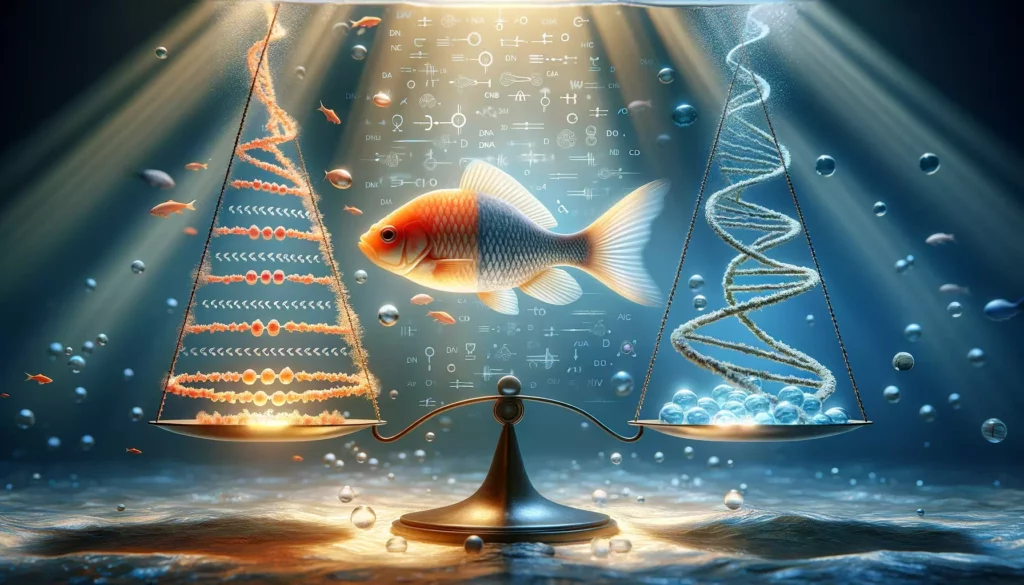
Chromatophores are pigment-containing cells found in the skin and scales of GloFish. When the GFP or RFP genes are activated within these cells, they produce their respective fluorescent proteins. These proteins have the remarkable ability to absorb ultraviolet (UV) light from their environment and then re-emit it as visible light. This process results in the vibrant and mesmerizing colors that GloFish are known for.
The specific combination of genes and their regulatory elements determines the coloration of each GloFish. For instance, a combination of both GFP and RFP genes can lead to a fish that appears orange. These genetic modifications do not harm the fish and are simply a byproduct of scientific innovation.
In conclusion, the mechanism behind GloFish’s glow lies in the genetic modification that enables the expression of fluorescent proteins within their chromatophores. These proteins absorb UV light and emit it as visible light, creating the stunning colors that make GloFish so captivating. Understanding this biological process adds to the wonder of these unique genetically modified fish.
Caring for Your GloFish
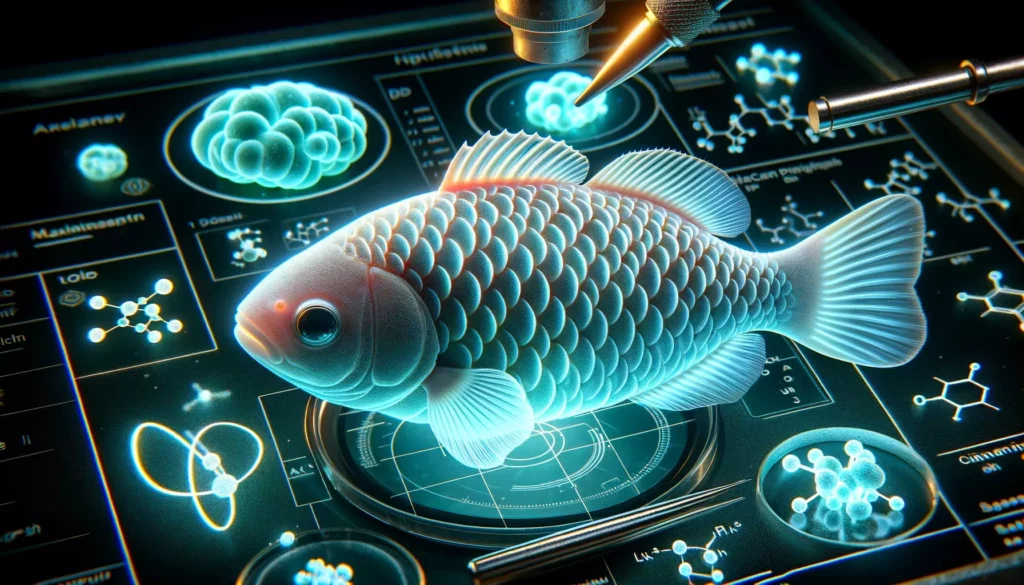
The role of genes in the fluorescence of GloFish is a fascinating aspect of their biology. Let’s delve into a detailed analysis of how specific genes and proteins contribute to the glowing colors of these remarkable fish.
Two key genes play a central role in GloFish’s ability to emit light: the green fluorescent protein (GFP) gene and the red fluorescent protein (RFP) gene. These genes are responsible for the distinct colors seen in GloFish. When these genes are inserted into the fish’s DNA, they are transcribed into messenger RNA (mRNA) molecules.
Messenger RNA serves as a template for the synthesis of fluorescent proteins. The mRNA molecules containing the genetic code for GFP or RFP are translated by ribosomes in the cell’s cytoplasm. As a result, fluorescent proteins are produced within specialized cells called chromatophores.
Chromatophores are pigment-containing cells found in the skin and scales of GloFish. The fluorescent proteins produced by the GFP or RFP genes are stored within these cells. When exposed to ultraviolet (UV) light, such as ambient light in an aquarium, the fluorescent proteins absorb this light energy.
Absorption of UV light excites the electrons within the fluorescent proteins, causing them to move to higher energy states. When these excited electrons return to their ground state, they release the excess energy in the form of visible light. This emitted light is what creates the striking and vivid colors that make GloFish so mesmerizing.
Different combinations of genes and their regulatory elements determine the specific coloration of each GloFish variant. For instance, a combination of GFP and RFP genes can produce an orange hue, while other combinations result in electric green, starfire red, or cosmic blue colors.
Join the Conversation About GloFish

The genes responsible for the fluorescence in GloFish, such as GFP and RFP, are crucial for their unique colors. These genes encode for fluorescent proteins, which are produced within chromatophores and emit visible light when exposed to UV light. The specific combination of genes determines the fish’s coloration, contributing to the captivating appearance of GloFish.
Genetic modifications are the key to creating the dazzling array of colors in GloFish. Here, we’ll explore how genetic engineers make alterations to the fish’s genes to achieve different color variants and discuss the ethical and ecological considerations associated with these modifications.
The Genetic Modification Process
The process of genetic modification in GloFish typically involves the insertion of specific genes, such as the green fluorescent protein (GFP) gene or the red fluorescent protein (RFP) gene, into the fish’s DNA. This process is known as transgenesis. Scientists use various techniques to introduce these genes, such as microinjection of DNA or gene editing using CRISPR-Cas9.
To create different color variants, genetic engineers combine different fluorescent protein genes and their regulatory elements. For instance, combining the GFP and RFP genes can result in an orange-colored GloFish. The precise combination of genes determines the specific coloration of the fish. These genetic modifications do not harm the fish and are aimed solely at achieving the desired visual effect.
Ethical considerations surrounding genetic modifications in GloFish revolve around the well-being of the fish and the potential risks associated with GMOs. Strict regulations are in place to ensure responsible breeding and sale of GloFish, including guidelines for their care and containment to prevent accidental release into the environment.
Creating a Kaleidoscope of Colors
Ecological concerns are also significant. The release of genetically modified organisms (GMOs) into the wild can have unintended consequences, such as genetic pollution or disruption of natural ecosystems. To mitigate these risks, it’s essential to keep GloFish as pets in controlled environments, such as aquariums, and prevent their introduction into natural waters.
Genetic engineers modify the genes of GloFish to create various color variants by introducing fluorescent protein genes like GFP and RFP. Ethical considerations emphasize responsible ownership and care, while ecological concerns underscore the importance of preventing GMOs like GloFish from escaping into the environment. When managed responsibly, GloFish can be enjoyed as captivating pets without posing significant ecological risks.
The development of GloFish has continued to progress since their initial introduction to the market. Recent advancements in genetic modification have expanded the range of colors and patterns available, providing even more options for aquarium enthusiasts. Here’s an overview of the latest achievements in the field of genetic modifications for GloFish:
- Expanded Color Variations: Genetic engineers have successfully introduced additional fluorescent protein genes into GloFish to create new and vibrant color variations. These advancements have resulted in fish with striking colors like Electric Green, Starfire Red, Cosmic Blue, and more.
- Pattern Variations: In addition to colors, scientists have worked on introducing unique patterns to GloFish. This includes fish with stripes, spots, or even intricate designs, further enhancing their visual appeal.
- Improved Genetic Editing Techniques: The use of advanced genetic editing techniques, such as CRISPR-Cas9, has allowed for more precise and efficient modifications. This means that scientists can create specific color combinations and patterns with greater accuracy.
- Enhanced Bioluminescence: Researchers have also focused on enhancing the intensity of the bioluminescent glow in GloFish, making them even more captivating to observe in aquariums.
- Ethical Considerations: Alongside these advancements, there has been a growing emphasis on addressing ethical concerns. Scientists and organizations are working together to establish guidelines and regulations to ensure the responsible creation, sale, and care of GloFish.
- Environmental Safety: Ongoing research aims to further minimize the potential environmental risks associated with GloFish. This includes developing containment measures to prevent their accidental release into natural ecosystems.
In conclusion, the development of GloFish continues to evolve, with scientists achieving remarkable advancements in genetic modifications. These include expanded color and pattern variations, improved genetic editing techniques, and a heightened focus on ethical and environmental considerations. As a result, GloFish enthusiasts now have access to an even wider array of visually stunning fish for their aquariums.
Popularity among Aquarium Enthusiasts
GloFish have gained immense popularity among both seasoned aquarium enthusiasts and newcomers to the hobby. Their captivating fluorescent colors and unique appearance make them a sought-after choice for those looking to add a touch of radiance to their aquatic collections. The appeal of GloFish lies not only in their striking visual beauty but also in the fascinating genetic science behind their glow.
These fluorescent fish come in a variety of vibrant colors, from Electric Green to Cosmic Blue, providing a wide range of options for aquarium enthusiasts to choose from. Their captivating glow adds a mesmerizing and otherworldly ambiance to any aquarium setup. GloFish have become a conversation starter and a source of fascination, making them a popular choice among aquarium hobbyists looking for something out of the ordinary.
Caring for GloFish and Their Aquariums
Taking care of GloFish involves providing them with a suitable environment and ensuring their well-being:
- Proper Aquarium Setup: GloFish thrive in well-maintained aquariums with appropriate water conditions. Ensure your tank is adequately sized, with proper filtration and aeration.
- Water Quality: Regularly test the water parameters, including temperature, pH levels, and ammonia levels. GloFish prefer water temperatures between 72°F and 78°F (22°C to 26°C) and a pH range of 6.5 to 7.5.
- Adequate Lighting: While GloFish are known for their glow, they still require regular lighting for their daily routines. Provide a standard lighting cycle of 12 hours a day.
- Compatible Tankmates: Choose tankmates that are compatible with GloFish and won’t harm or stress them. Avoid aggressive or fin-nipping species.
- Nutrition: Offer a balanced diet of high-quality fish food. GloFish have the same dietary requirements as their non-fluorescent counterparts.
- Responsible Ownership: Adhere to ethical practices and local regulations when it comes to keeping GloFish. Prevent their accidental release into the wild, as they are genetically modified organisms.
- Observation and Enjoyment: Spend time observing and enjoying the beauty of your GloFish. Their vibrant colors and glow make them a delightful addition to any aquarium.
GloFish have become immensely popular among aquarium enthusiasts due to their stunning colors and unique genetic modifications. Proper care involves maintaining suitable aquarium conditions, ensuring water quality, and providing a balanced diet. Ethical ownership and responsible care are essential to ensure the well-being of these fascinating fish.
In conclusion, we’ve explored the fascinating world of GloFish, genetically modified fish known for their captivating glow. We’ve covered key aspects of their biology, including the role of genes in their fluorescence and the mechanisms behind their unique colors. We’ve also delved into their history, from their origins in scientific research to their introduction as popular aquarium pets.
GloFish continue to evolve, with genetic engineers achieving remarkable advancements in creating new color variations and patterns. However, ethical considerations and environmental safety remain essential aspects of their care and ownership.
As we wrap up this discussion, we invite you to share your thoughts and experiences with GloFish. Have you had the opportunity to keep these remarkable fish in your aquarium? Do you have any questions or insights to add to the conversation? We look forward to hearing from you in the comments section below and continuing the dialogue about these stunning and scientifically intriguing aquatic companions.
We value your thoughts and experiences with GloFish! Please feel free to share your opinions, questions, or even your own GloFish stories in the comments section below. We’re eager to hear from you and continue the conversation about these captivating fish.
If you’ve enjoyed learning about GloFish and want to stay updated on the latest insights and information about these unique aquatic companions, consider subscribing to our account. Don’t forget to share this post with your friends and fellow aquarium enthusiasts on social media. Let’s spread the wonder of GloFish and the science behind their glowing beauty to a wider audience!

